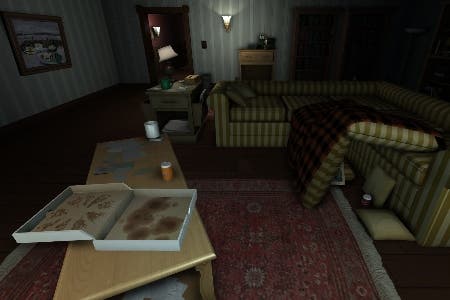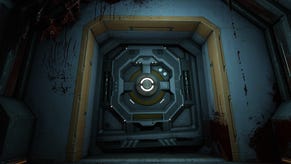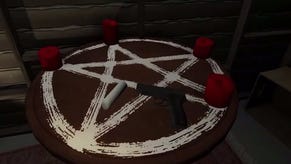Gone Home transports players back to 1995
Former Bioshock 2 developers create a unique time capsule.
Historically games haven't done a very good job at recreating what it's like to inhabit a specific time and place. Assassin's Creed 2 may get the surface details of Renaissance Italy down - the architecture, the costumes, and the technology - but I can't tell you how life in Florence differed from life in Venice, aside from the fact that they seemed to both have a lot of stabbing and people yelling "thief!" I've traveled the globe in Call of Duty shooting men in army fatigues and blowing up tanks, but based on that I wouldn't be able to say how modern day Russia differs from Afghanistan, besides one being a bit snowy while the other's a bit sandy.
The ex-Bioshock 2 developers at The Fullbright Company are taking a different tack to the period piece in their upcoming first-person adventure Gone Home. It's cut out all the things that turn the scenery into a backdrop - combat, puzzles, large worlds, etc. - and instead placed the setting in the foreground. Exploring its relatively small but astonishingly detailed manor in 1995 is the game's central mechanic.

Upon playing the first half-hour of Gone Home at Fullbright's headquarters - a two-storey house tucked away in NE Portland's Hollywood district - I'm initially in for a stark reminder of what a different world 1995 was. While only 17 years ago, our lives were drastically different back then. The internet existed, but wasn't yet commonplace in the average household, cell phones were likewise out of the hands of the common man, and people taped television shows on VHS. Heck, EG didn't even exist back then.
This lo-fi setting is crucial to Gone Home's story, in which players assume the role of a college student named Kaitlin Greenbriar returning to her family's new abode after a year in Amsterdam. Upon being deposited at her family's recently acquired estate, things are quietly amiss - no one is home, and her teenage little sister Sam has left a note saying not to look for her. The phones are down and the cable is out, so there's no way to get in touch with your family. All you can do is poke around trying to figure out what the hell is going on and where everyone is.
"You can't fake mom handwriting."
Steve Gaynor, co-founder, The Fullbright Company
Environmental storytelling of this nature is nothing new to video games. We've explored the remnants of countless places where something terrible has happened in games like Bioshock, Fallout, Dead Space and Portal, but usually this comes down to fairly straightforward affairs like rifling through a few e-mails or listening to answering machine messages. In other words, the writing is usually on the wall, whereas in Gone Home it's on the receipts, crumpled up notes, bulletin boards and ticket stubs.
The subtle, personal details in this lonely manor feel impressively authentic, and put most other forms of environmental storytelling to shame. A TV listing is recreated from an actual schedule in 1995 with such shows as The X-Files playing on Fox and Walker, Texas Ranger reruns on basic cable. Clearly someone is an X-Files fan - the listing is circled in red, while a VHS in the cabinet has a handwritten "X-Files Season One" note stuck to its spine, and we'll later find an "I want to believe" poster in Sam's bedroom.

Further poking about reveals more nostalgic mementos like a crumpled up note in Sam's waste bin that turns out to be a disciplinary note to her friend who was reprimanded for wearing a Pabst Blue Ribbon sweatshirt to school. A health class homework assignment on menstruation has the date, and teacher's name in the corner, while a mass produced letter from the new principal addresses the community in that bland, professional manner that ensures no one will more than skim it thinking "yeah, new principal, whatever." Even the mom's note from her old college friend Carol is written on the kind of floral stationery that everyone's mom had back then, and it's scrawled in that very particular penmanship specific to women who grew up in the 1950s.
"You can't fake mom handwriting," says creative director Steve Gaynor, who specifically recruited his wife's mom to write that note. "You just have to find a mom."
While Gone Home's painstakingly realistic setting and lack of conventional puzzles give it a uniquely down-to-earth vibe, there is one obvious concession to modern game design in the form of audio diaries. They're not explicitly called that, nor are they scattered around as tapes with exposition dumps, but early on the player finds Sam's diary in which we hear her read aloud that she misses her older sister and will record her memories as if she's talking to her (remember how hard it was to keep in touch with someone abroad before internet?). Finding various evidence of her recent experiences will result in aural snippets of her extrapolating on those subjects with tales of attending her first rock concert or how she's trying to worm her way out of a friendship she started in grade school with a boy because he had a bunch of cool video games.
"We felt like making a personal connection with Sam as a character was going to be what drove a lot of the players engagement with this world."
Steve Gaynor, co-founder, The Fullbright Company
This more conventional mode of storytelling stuck out like a sore thumb to me, so I ask Gaynor if perhaps the ultra-realistic approach ultimately ended up being too limiting.
It turns out that's only the secondary reason behind implementing these. "Part of it is there's a certain upper limit of what you can tell purely through means of finding book covers, and receipts, and notes between people and stuff," Gaynor explains, but the prime reason behind this is to make the player connect with Sam on a more intimate level.
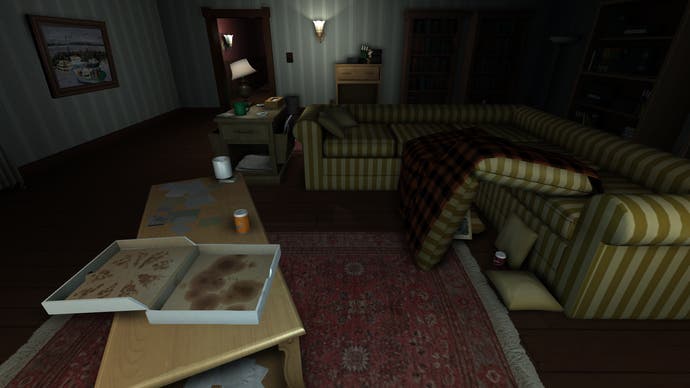
"We wanted to have the human voice of the story be in the game. We felt like making a personal connection with Sam as a character was going to be what drove a lot of the players engagement with this world," Gaynor says. "Being able to hear her tell the story in her own words - it was really valuable. As well as the practical side of she can talk about stuff that happens outside of the house that there wouldn't be a physical record of - that nobody would have written a note about."
Gaynor admits these won't be for everyone, and feels that players should be allowed to tailor an experience to their liking. "If someone is playing this game and they're like 'I want to have a very rigorous simulation exploring this space and none of the meta stuff - none of this person talking to me and a map that automaps,' they can turn all that stuff off."
In fact, Gaynor often found himself disabling things like objective markers and quest status pop-ups in games like Bioshock and Dishonored. "The kind of design that's interesting to me is one where the player's allowed to define as much of the experience as possible," he states. "That's more interesting than saying 'there's only one way to experience this game and you have to ingest all of our story or we're not going to play along."
"My guess is after we release the game there will be a certain contingent of people on forums and stuff who are like 'the right way to play this game is to go into the options turn off the audio diaries, explore the whole house, then turn them on and start a new game.' Because you can't really do it in the opposite direction."
I find myself quite split on the audio diaries, myself. On one hand they're initially intrusive and ruin the immersion by reminding the player that they're simply playing a videogame. On the other hand, they are well voice-acted, evoking the 90's high school experience in a way not possible for a game set entirely in a stuffy manor.
"The kind of design that's interesting to me is one where the player's allowed to define as much of the experience as possible."
Steve Gaynor, co-founder, The Fullbright Company
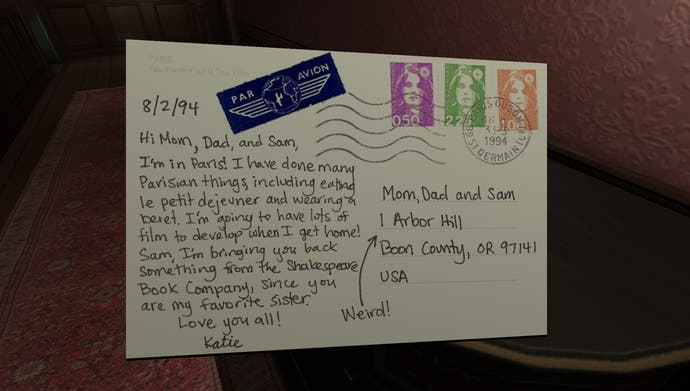
Gaynor explains that these audio diaries present a clear through-line for the narrative, but I'm wondering how necessary that is. There are plenty of tantalising mysteries beyond simply where Sam and your parents are. The house itself was inherited from a reclusive uncle with no kids who no one knew very well. Who was this man and why did he leave everything to his distant nephew? Why did the family decide to move into the house rather than have an estate sale and rake in the cash? Why do Sam's friends refer to this place as "the psycho house?" Why does Sam leave a note to stay out of the attic? What could she possibly be hiding up there?
So it's a rather juicy tale with every new piece of info gradually altering your perception of who these people are. A book on raising a teenage daughter (with a back cover quote from The Atlantic), seems like just the sort of bibelot a couple of out of touch parents might have, while the dad's failed career as a writer of political thrillers about JFK hints at a man who would probably be considered "creative" by his peers and a dusty academic square by anyone under 30.
Gone Home is a lot of things, then. It's a mystery unraveled at your own pace, a coming of age story and a family drama. But perhaps most of all it's a time capsule. Gone Home takes us back to a world most of us lived through, then forgot. Kaitlin may feel unease a coming back to an environment she never knew, whereas we're coming back to a place that feels uncannily familiar; and it's every bit as unsettling.
